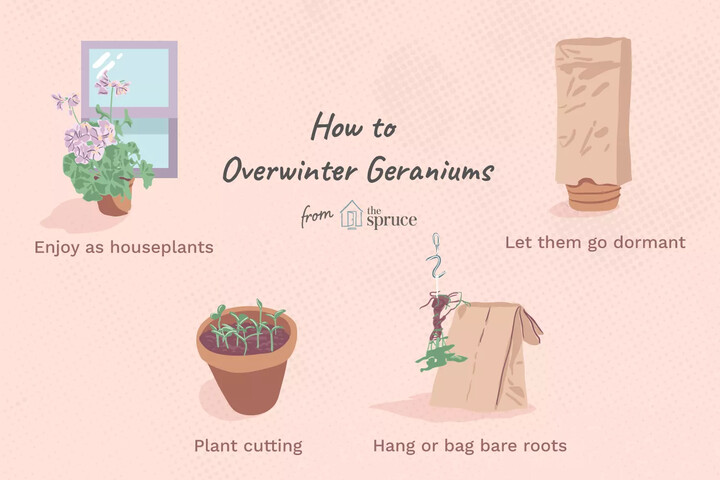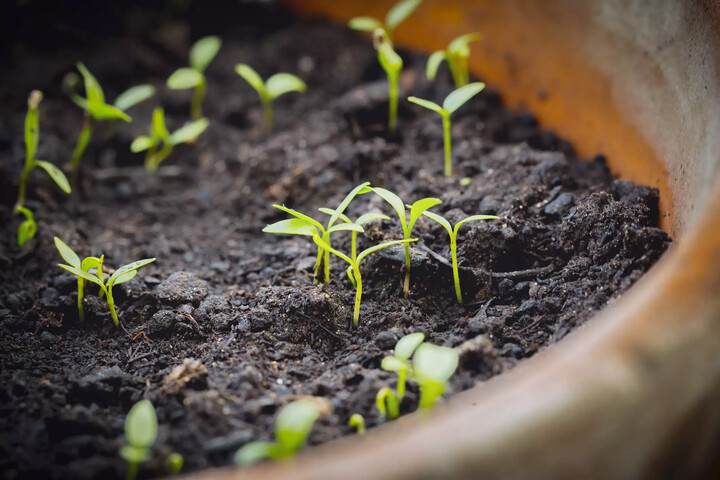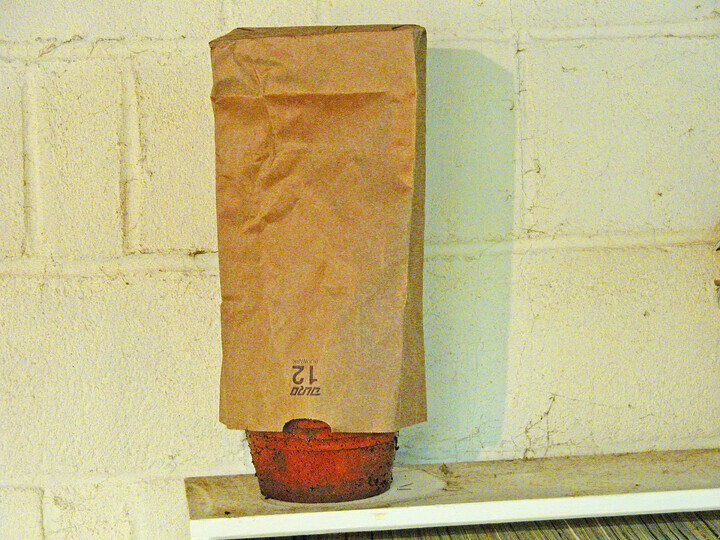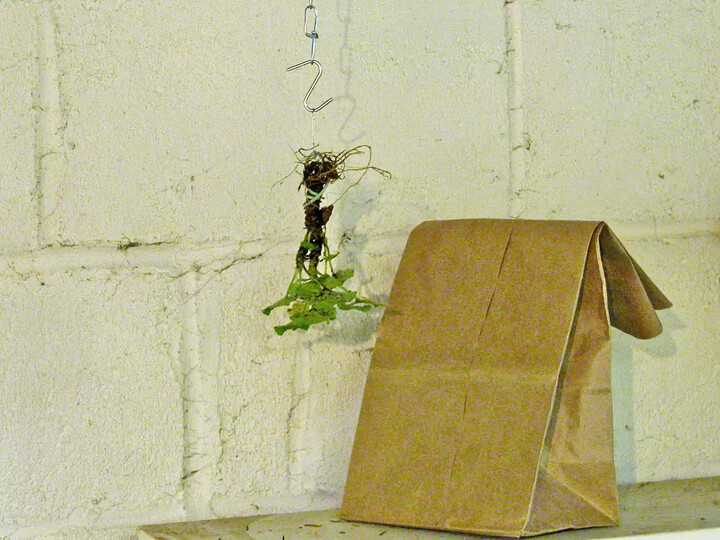Geraniums (Pelargonium hybrids) are usually only grown as annuals, except in USDA zones 10 and 11, where the mild climate allows them to flourish outdoors all year long. Therefore, come fall, gardeners in zones colder than 10 have four options for their plants: Let them die off as annuals; bring them indoors as houseplants; propagate new plants from cuttings; or store them dormant until spring. If your garden is full of this flower, it's probably worth it to overwinter some plants. However, if you only grow a few plants each year, buying new ones in the spring might be more cost-effective and less time-consuming.
When to Overwinter Geraniums
You must avoid frost on your geraniums for successful overwintering.1 Full plants and cuttings should be harvested in the fallf while the plant is still blooming and the temperature is mild. If you harvest too late, the plant might have already entered its die-off phase. On the other hand, harvesting too early can mean sacrificing peak blooms in your garden.

What You'll Need
Equipment / Tools
Garden shovel
Garden trowel
Gardening gloves
Garden shears
Spray bottle
Materials
Ceramic pots
Potting soil
Twine
Paper grocery bags
Instructions
Overwintering Geraniums by Growing Them Indoors
Geraniums make decent winter houseplants if you can provide them with plenty of bright light. A sunny west- or south-facing window (or grow lights) assures that they won't grow spindly. Just make sure to situate the plants away from drafts that might force dormancy.
Check for Insects or Disease
Before the first frost, check your geraniums closely for signs of insects or disease. Your should only overwinter healthy plants.
Dig, Pot, and Prune
Dig up and pot the healthy plants. Then, prune them to a third of their size. Water the pots well, and then allow the soil to dry out.
Bring Plants Indoors Once It's Cold
Bring your plants indoors before it's time to close the windows and turn on the heat for winter. This gives the geraniums time to adjust to the drop in humidity that occurs indoors during winter.
Overwintering Geraniums as Cuttings
Many plants can be propagated with cuttings, including geraniums. Cuttings will take up less space than a potted plant indoors.

Cut the Stem
Cut a 4- to 6-inch portion of a green stem just above a node, which is the part of a stem from which leaves emerge, during a lull in the plant's blooming cycle. Don't use woody or old stems.
Make Another Cut
On your cutting, make another cut (on the same end you previously cut) below a node, so your new plant is 4 to 6 inches long. Strip off all of the leaves and flowers from the plant, leaving the two sets of leaves at the top.
Dip stem in rooting hormone
Slightly moisten the bottom 2 inches of stem if using powdered rooting hormone. Dip the stem in the powder or use a gel rooting hormone.
Plant the Cutting
Use your finger to make a 2-inch deep hole in the soil. Plant the cutting in damp soil, making sure not to remove the rooting hormone when planting. Firm the soil around the cutting, and place it near a bright window. You can plant several cuttings in one pot.
Water the Cutting
Water the cutting, and don't allow it to dry out. If the humidity is less than 50 percent, consider adding a bag over the cutting and pot to retain moisture. The cutting should root in 6 to 8 weeks, although it may be slightly sooner. Grow the new geranium as a houseplant until spring, and then move it outside.
Overwintering Dormant Geraniums
Overwintering full-size, dormant geranium plants involves tucking them away and then pulling them out again in the spring. A cool, unheated, slightly damp basement is ideal for storing dormant geraniums in pots.

Pot Before First Frost
Pot your geraniums before the first frost, cutting the plants back by about half. Allow the soil in the pot to dry out.
Place Paper Bag on Each Pot
Place an overturned paper bag on top of each plant. Store the plants in the basement.
Check Every Few Weeks
Check your geraniums every few weeks to make sure the leaves and stalks are not shriveling. If they show signs of drying, spray them with water or slightly water the roots. Then, allow the plant to dry completely before replacing the paper bag.
Overwintering Dormant, Bare-Rooted Geraniums
Another approach to overwintering geraniums involves storing them with bare roots. For this method, hanging the plants or covering them loosely with a paper bag works well and eliminates the need for pots. As with any dormant storage, select a spot that's cool, dark, and damp but above freezing.

Dig up Geraniums
Dig up your geraniums before the first frost. Cut back the plants by approximately half, and shake the soil from the roots. Set the plants in a spot to let them dry for a few days to avoid mold in storage.
Hang or Place Plants
Either store the plants upside down in loose-fitting paper bags or place in a cardboard box and close the lid. Then, store them in a cool, dark room. If you opt to use bags, make sure not to seal them tightly to allow airflow.
Check Plants
Check your plants every few weeks. If they are shriveling, spray them with water or slightly dampen the root area. Allow the plants to dry completely before placing them back into the bags.